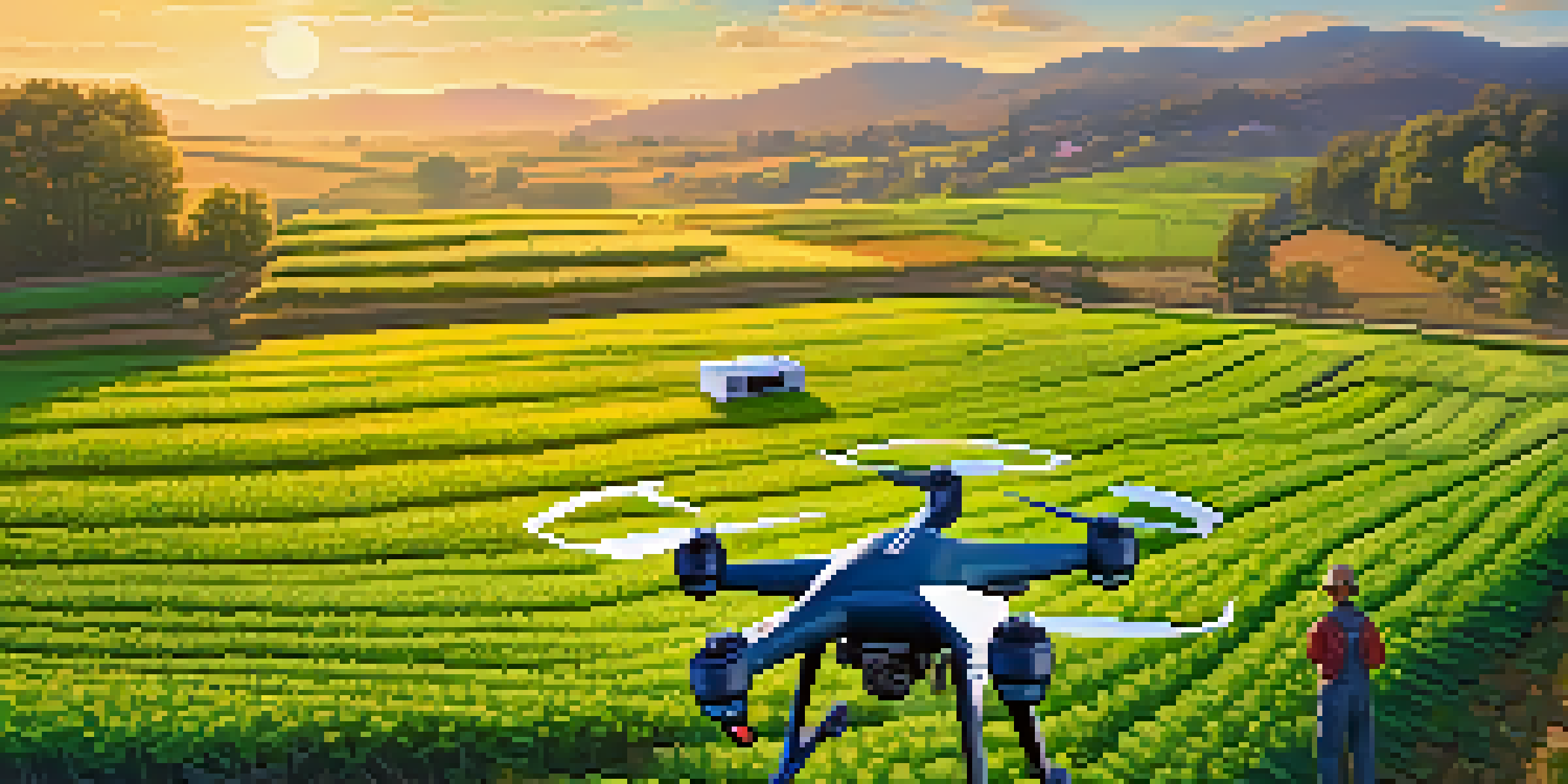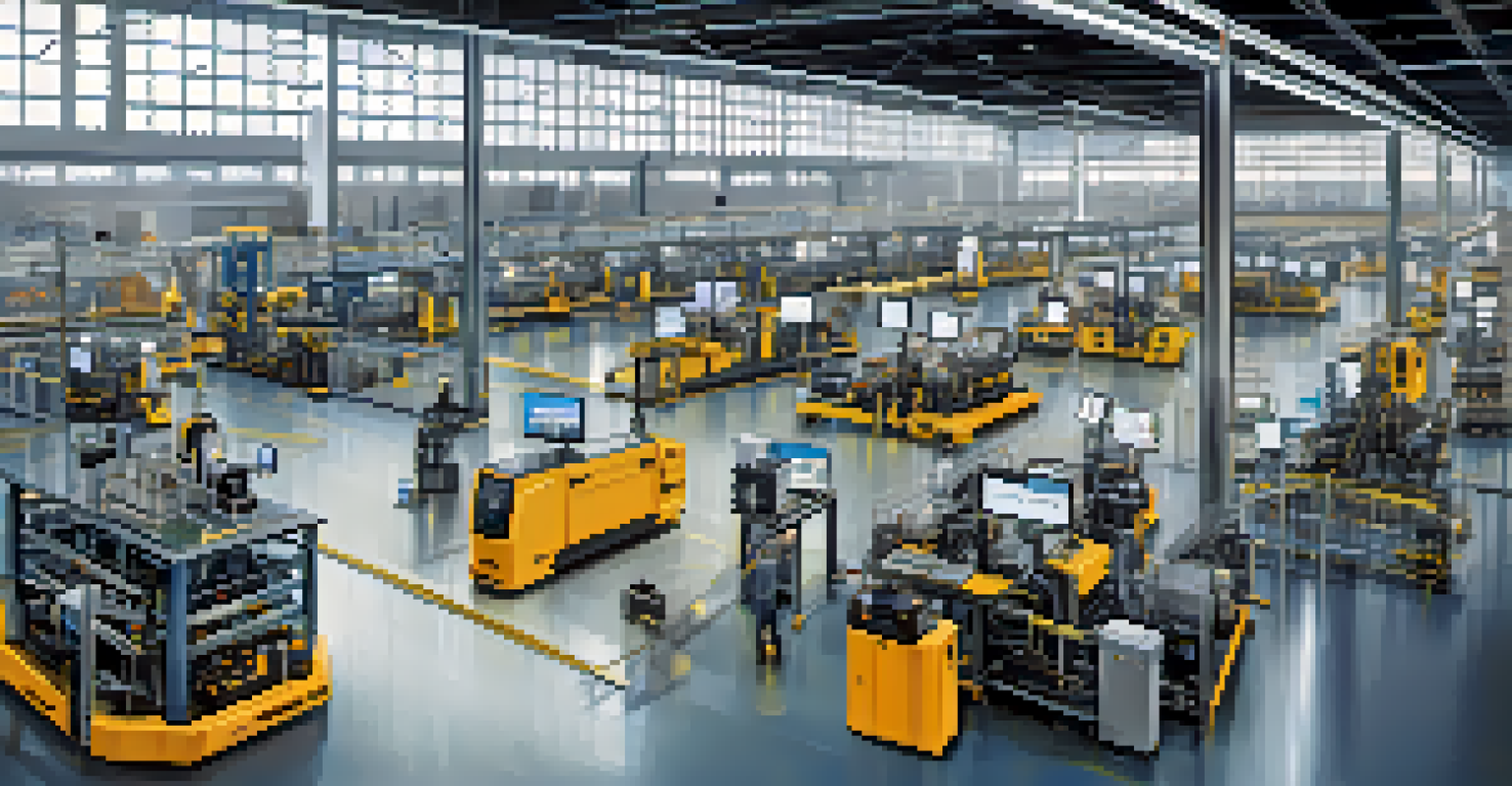Top Remote Monitoring Technologies Transforming Industries

Understanding Remote Monitoring Technologies and Their Impact
Remote monitoring technologies refer to tools and systems that allow individuals and businesses to track and manage operations from a distance. This can include everything from IoT devices that monitor environmental conditions to software that tracks machinery performance. These technologies are becoming increasingly vital in various industries, helping to boost efficiency and reduce costs.
The real power of technology is not in the tools themselves, but in how we use them to solve real-world problems.
The impact of remote monitoring is significant, as it enables real-time data collection and analysis, allowing for timely decision-making. For instance, a farmer can monitor soil moisture levels remotely, adjusting irrigation systems accordingly to optimize crop yield. This shift to remote capabilities not only enhances productivity but also minimizes the need for physical presence in potentially hazardous environments.
As industries continue to evolve, the integration of remote monitoring technologies is proving essential for competitive advantage. Companies that embrace these tools are often better positioned to respond to market demands and improve overall operational efficiency. Consequently, understanding these technologies is the first step toward leveraging their full potential.
IoT in Manufacturing: A Game Changer for Efficiency
The Internet of Things (IoT) has transformed the manufacturing sector by enabling machines to communicate with one another. This interconnectedness allows for seamless data sharing, which is crucial for monitoring equipment performance and predicting maintenance needs. For example, sensors on a production line can alert managers to potential issues before they lead to costly downtime.

Moreover, IoT devices can help in inventory management by tracking materials and products in real time. This means manufacturers can optimize supply chains and reduce excess stock, ultimately saving money and resources. By harnessing IoT technology, manufacturers can achieve a more agile and responsive production process.
Remote Monitoring Boosts Efficiency
Remote monitoring technologies enable real-time data collection, enhancing decision-making and operational efficiency across various industries.
As a result, integrating IoT into manufacturing not only streamlines operations but also enhances product quality. Companies that adopt these technologies can meet customer demands more effectively, leading to increased satisfaction and loyalty. It's clear that IoT is more than just a trend; it's a fundamental shift in how manufacturing operates.
Telehealth: Revolutionizing Healthcare with Remote Monitoring
Telehealth has gained immense traction, especially in recent years, by utilizing remote monitoring technologies to provide healthcare services. Patients can now use wearable devices to track vital signs, such as heart rate and blood pressure, and share that data with healthcare providers in real time. This capability fosters proactive health management and enhances patient engagement.
Technology is best when it brings people together.
Remote monitoring in healthcare also reduces the necessity for in-person visits, which can be a game changer for those with mobility issues or chronic conditions. For instance, a patient recovering from surgery can be monitored at home, allowing healthcare professionals to intervene early if complications arise. This not only improves patient outcomes but also alleviates the burden on healthcare facilities.
As telehealth continues to evolve, it promises to make healthcare more accessible and personalized. The integration of remote monitoring allows for tailored treatment plans based on real-time data, paving the way for a more efficient healthcare system. This shift signifies a monumental change in how we approach health and wellness.
Smart Agriculture: Enhancing Crop Management with Technology
Smart agriculture employs remote monitoring technologies to optimize farming practices and enhance crop management. Farmers can utilize drones to survey fields, monitor crop health, and assess soil conditions from above. This aerial view provides invaluable insights that guide decisions on irrigation, fertilization, and pest control.
Additionally, IoT sensors can collect data on weather patterns and soil moisture levels, allowing farmers to make informed choices about when to plant and harvest. For example, a farmer can receive alerts about potential frost or drought conditions, enabling proactive measures to protect crops. This leads to more efficient use of resources and better yields.
IoT Transforms Manufacturing Processes
The integration of IoT in manufacturing improves equipment communication, inventory management, and ultimately product quality.
Ultimately, the use of remote monitoring in agriculture is about sustainability and efficiency. By leveraging these technologies, farmers can reduce waste, conserve water, and produce food more responsibly. This not only benefits the environment but also supports the growing global demand for food.
Remote Monitoring in Energy Management: A Sustainable Approach
The energy sector is increasingly adopting remote monitoring technologies to manage resources more sustainably. Smart grids equipped with sensors allow for real-time monitoring of energy distribution, helping to optimize performance and reduce waste. This technology enables utilities to respond swiftly to outages and inefficiencies, improving service reliability.
Moreover, businesses can use remote monitoring to track energy consumption patterns, identifying opportunities for savings. For example, a factory can analyze its energy use data to pinpoint areas where it can implement energy-efficient practices. This not only cuts costs but also contributes to a greener environment by reducing carbon footprints.
As the demand for renewable energy sources grows, remote monitoring will play a crucial role in integrating these technologies into the energy grid. It facilitates better management of resources, ensuring that energy systems are adaptable and resilient. This transition is essential for a sustainable energy future.
Logistics and Supply Chain: Optimizing Operations with Remote Tech
Remote monitoring technologies have significantly impacted logistics and supply chain management. By utilizing GPS tracking and RFID tags, companies can monitor the location and condition of shipments in real time. This visibility helps businesses manage their logistics more effectively, reducing delays and improving delivery accuracy.
Furthermore, remote monitoring allows for better inventory management by providing up-to-date information on stock levels. Companies can avoid overstocking or stockouts by analyzing trends and adjusting orders accordingly. This data-driven approach leads to more efficient supply chain operations and enhanced customer satisfaction.
Telehealth Enhances Patient Care
Telehealth utilizes remote monitoring to provide personalized healthcare services, increasing accessibility and improving patient outcomes.
As the logistics industry continues to evolve, embracing remote monitoring technologies will be essential for staying competitive. Companies that leverage these tools can streamline operations, minimize costs, and respond swiftly to market changes. In an increasingly global marketplace, efficiency is more critical than ever.
Security Systems: Enhancing Safety with Remote Monitoring
Remote monitoring technologies have transformed security systems across various sectors, providing enhanced safety and peace of mind. With the advent of smart cameras and motion sensors, businesses and homeowners can monitor their properties remotely, receiving notifications on suspicious activities in real time. This capability allows for quicker responses to potential threats.
Moreover, advanced analytics can help identify patterns in security data, aiding in the prevention of future incidents. For instance, a retail store can analyze foot traffic data to determine peak hours for theft, allowing management to allocate resources accordingly. This proactive approach can significantly reduce losses and improve overall security.

Ultimately, the integration of remote monitoring in security systems is about creating safer environments. By leveraging these technologies, individuals and organizations can stay one step ahead of potential threats, ensuring the protection of assets and people alike. It's a crucial element in today’s safety landscape.
The Future of Remote Monitoring: Trends to Watch
As we look toward the future, the evolution of remote monitoring technologies shows no signs of slowing down. Innovations such as artificial intelligence (AI) and machine learning are set to enhance data analysis capabilities, leading to more accurate predictions and insights. This means industries can expect even greater efficiency and productivity as technology advances.
Additionally, the rise of 5G connectivity will further improve remote monitoring capabilities, allowing for faster data transmission and more reliable connections. This enhanced connectivity will enable more devices to operate seamlessly, fostering the growth of smart cities and interconnected systems. As a result, industries will be able to leverage real-time data like never before.
In conclusion, the future of remote monitoring is bright, with endless possibilities for transformation across various sectors. By staying informed about emerging trends and technologies, businesses can prepare themselves for the changes ahead. Embracing these advancements will be key to thriving in an increasingly digital world.